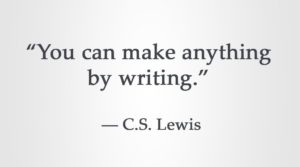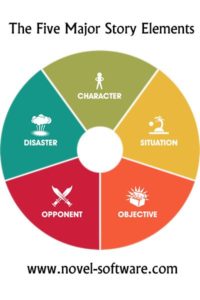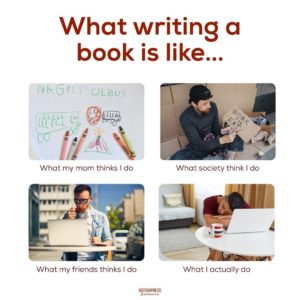Creative Writing Explained: A Guide for all Writers
For many people, the process of creative writing is shrouded in mystery. They may have a general idea of what it entails, but they’re not quite sure how to go about it themselves. This article is designed to clear up some of that confusion and provide a basic guide for anyone who wants to start writing creatively.
- What is Creative Writing?
- The Elements of Creative Writing
- What are the forms of Creative Writing?
- Understanding Creative Fiction and Creative Non-Fiction
- How to get started in Creative Writing?
- Effective tips for Writers
- Interesting Creative Writing Exercises for Writers
What is Creative Writing?
Creative writing is a form of self-expression that involves telling stories and creating works of art in a variety of written forms. Creative writing encompasses everything from poetry to novels, scripts, memoirs, articles, and more. It requires imagination and storytelling to craft stories that educate, evoke emotions, or captivate the reader.
Creative writers often use the written word to explore their deeper thoughts and feelings, putting their unique perspectives into words. Through creative writing, authors can showcase what they perceive as interesting or what they’re passionate about in an imaginative way.

To get started with creative writing all it takes is a willingness to express oneself authentically – what story do you have to tell?
The Elements of Creative Writing
Creative writing is an art form unlike any other. With its many elements, it can produce unique and powerful pieces of literature that stir something within us all. The first step in crafting a captivating tale involves what is known as the ‘elements of creative writing’ which include plot, character arc, point of view, theme, emotional appeal, and the use of visually descriptive language.

The plot is what drives the story and is formed by each moment happening closely after the last which sets up actions for the characters to follow to reach the resolution.
Theme can be defined as what lies between the lines through underlying meanings present throughout the work. They may hold moral implications or be simply for readers to discover what life can teach us about ourselves.
Point of view relates to narrators’ perspectives on events occurring in a book as well as what they choose to share with their readers.
Characters play an important role in that they should grow throughout their stories by developing an arc – real changes in beliefs or physical development due to how events shape them over time which only adds greater depth and impact to storylines.
Finally, stories hold power when they create an emotional connection between what happens and how readers feel while reading it through its vivid descriptions so that they can experience what happens fully like being there themselves – this is where visually descriptive language comes into play.
Put together, these components form what we see today as creative writing – full of potential with every piece ready to tell us exciting tales afresh!
What are the forms of Creative Writing?
Creative writing is an art form that has come a long way over the years. It involves taking what might be considered mundane situations and transforming them into something truly engaging and creative. There are many forms of creative writing, and each piece of creative writing has its own unique style and approach.
Poetry is perhaps the oldest of these types, crafted around intricate rhyming schemes and composition. Fiction stories take what might be considered an average experience and turn it into an entirely new world full of vibrant characters, conflict, and resolution.
Creative nonfiction takes real-life events or people and crafts them in interesting ways to make sense to the audience. Lastly, there are scripts that tell stories primarily through dialogue but can also use other elements like setting to craft their stories in unique ways.
Each form of creative writing teaches us lessons about ourselves and our world in intricate yet readable forms – something which no other form of communication can quite recreate.
Understanding Creative Fiction and Creative Non-Fiction
Creative writing is a form of art, that allows authors to let their imaginations run wild and create stories with powerful messages. Both creative fiction and creative nonfiction come under types of creative writing.
Creative fiction and its types
While the umbrella term of creative fiction covers many different types, some of the most well-known are novels, short stories, plays, and screenplays which are all types of creative writing.
Novels
Novels are the finest examples of creative writing. They are books that typically contain a longer story and often are written in multiple chapters; they generally take more time to read, offering deeper engagement and development in characters.
Short stories
Short stories usually have fewer characters and plots that are resolved quicker than those found in novels; however, what they lack in quantity they make up for in quality by primarily focusing on a few events or characters instead of stretching the plot out over several chapters as a novel does.
Plays and Screenplays
Plays tend to feature dialogue-heavy settings intended for stages or theatres; although most playwrights focus on theatrical performance as an outlet for their work, there is an increasing trend of plays being adapted into films not just as source material but also as complete scripts.
Following this same idea, screenplays hold narrative action that focuses mainly on what transpires visually instead of lengthy explanations. Screenplays usually boil down events in sequence quickly so as to draw viewers’ attention within seconds.
All these different forms no doubt prove pervasive movements within the genre of creative fiction that pave the way for the rich content we see today.
Creative nonfiction and its types
Creative nonfiction is an umbrella term that encompasses many different types of creative writing. What unites them all is their reliance on factual information, as opposed to purely imaginative works.
Personal essays offer observations of individual experience and thought, while a memoir delves more deeply into the life of its author, documenting events in his or her personal history.
An autobiography offers a comprehensive portrait of the entirety of one’s own life.
Humor-focused works aim to entertain by employing wit and irony through jokes and other comedic devices. Each form has its own intrinsic value; what they all share in common is their insightfulness, connecting the larger world to what readers both know and don’t about the particular writer whose work they are reading.
How to get started in Creative Writing?
Getting started in creative writing can feel intimidating, and it’s natural to be unsure of where to begin. However, it isn’t as difficult as it seems.

Firstly, commit yourself to getting in the habit of writing every day, even if it’s only for a few minutes. From there, develop ideas and find new inspirations that can help shape your stories and ignite your imagination.
Read other authors’ works so you have an understanding of what’s been done before and use this source material to create something unique. Creative writing requires persistent effort, but allowing yourself unstructured time to just write makes all the difference in generating ideas or getting into a new mindset.
You will also receive insight from friends who might have read your work or provided feedback. Not getting frustrated is key – keep pushing forward! If you stick with it, creative writing is a truly rewarding journey that will open up amazing possibilities!
Interesting Creative Writing Exercises for Writers
Creative writing exercises can be fascinating tools for writers to try out. Whether you’re a new writer or experienced, these exercises can help sharpen your craft and provide structure for tackling projects.
Freewriting
One popular exercise is freewriting, which encourages turning off the internal critic and just allowing yourself to type whatever comes to mind for a certain period of time. This allows your ideas to flow continuously through your work without overthinking.
Clustering
Another valuable tool is clustering, an exercise that helps organize information in a nonlinear fashion. Researching and brainstorming topics before deciding on an overall theme is essential, making this an ideal exercise to ensure thoroughness.
Juxtaposition
Lastly, juxtaposition – placing elements side-by-side – is a great way to spark creativity when focusing on contrasting components. Although it can seem overwhelming at first, these fascinating creative writing exercises are sure to boost productivity if used properly.
Effective tips for Writers
When it comes to creative writing, some pitfalls can be difficult to identify and even harder to avoid. From lack of focus on character development to setting and plot flaws, there are a few tips that everyone should keep in mind when they start writing.
Show, don’t tell
One of the most common pitfalls is telling rather than showing, something that can be avoided by developing scenes with specific actions, well-written dialogues, and avoiding superfluous descriptions.
Narrative Structure and Plotting
Additionally, when it comes to narrative structure and plotting, making sure that each scene moves the story forward is key to creating an engaging experience for readers.
Spend time with your characters
Taking the time to really flesh out your characters and make sure that their motivations are plausible is also important for avoiding pitfalls related to characterization.
Take a step back
Lastly, as any experienced author will tell you, it’s always a good idea to take your time and step away from a story after you’re done working on it– at least until you can look at it more objectively. Avoiding pitfalls in creative writing allows writers to create work that resonates deeply with their readers!

